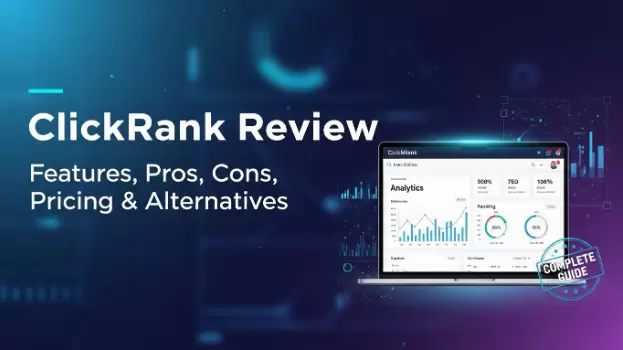Do you find running an ecommerce store to be overwhelming?
You are not alone...
Answering endless lists of customer queries, organizing orders and deliveries, virtually rummaging through stocks in your inventory—you feel like a day isn't enough for all these to-do’s, leaving you burnt out in just a short time.
The good news is: your business doesn't have to stay that way.
You can effectively streamline your ecommerce store operations and unload that burden off your shoulders.
I’m sharing five practical tips and tools to do exactly that:
1. Organize your content marketing campaign
Running content marketing campaigns involves several tasks. Producing high-quality content alone includes several to-do’s. You still have to plan their publication and more.
It’s such a comprehensive assignment that doing this with your other ecommerce business duties overwhelms you.
The result? You fail to balance your responsibilities and miss out on critical details, ruining your campaign’s performance down the line.
That is why you must organize your content marketing campaigns, including tasks, schedules, digital assets, SEO goals, and resources. Use reliable content management platforms to ease these workflows.
Content management tools automate various lifecycle phases, so you don't need to do everything by yourself.
For instance, instead of formatting from scratch and daily publishing your content, use built-in templates and set your desired posting schedule. The tool automatically publishes it according to your settings.
This way, you can focus on brainstorming content ideas and monitoring your performance. You can also spend more time on other ecommerce store duties.
2. Automate your omnichannel strategies
Providing omnichannel shopping experiences for your store entails ensuring your interactive channels are well-coordinated - from social media to your website, customer service, and others.
Let’s say your customer pre-orders a product through your app. In that case, they should find that reserved item on their account on your site. When they call your support team, your rep can quickly find all related information on their systems and relay it.
If any of these channels aren’t updated, you can ruin your customer experience and reputation. Shoppers can then decide not to return or recommend your business, lessening your potential sales.
Resolve that by automating your omnichannel strategies. Start with using a headless ecommerce site builder since it eases your omnichannel campaign implementation.
Headless platforms’ modern architecture makes it simple to integrate omnichannel support systems. This leads to greater flexibility in inventory management, buy-online-pick-up-in-store (BOPIS) schemes, curbside services, loyalty programs, and others. Customers even get extra-seamless and memorable shopping experiences.
Additionally, backend processes such as checkout, customer database, etc., won’t require tedious updates for every frontend adjustment request.
As a result, your overall ecommerce website management and customers’ shopping lives become simpler — increasing your landing page conversion rates and boosting your sales.
3. Harmonize warehouse-related tasks
Staying on top of your inventory, packaging, shipping, and other warehouse aspects can be tedious, especially if you're using manual methods.
Imagine constantly calling your warehouse for information now and then. This eats up your and your warehouse staff’s time and effort. You’re also likely to receive and publish outdated information on your website.
Using a warehouse management platform can help you better supervise that business aspect. It can:
- Update prices and stocks instantly and accurately in real-time
- Forecast labor needs and product performance
- Provide rich analytics and insights
- Integrate robust inventory tracking methods
- Document information electronically
- Helps sketch an efficient warehouse layout
- Personalize related customer support, and others.
With these powerful automated functionalities, your ecommerce store can experience greater data accuracy and visibility over your inventory.
You can also make intelligent business decisions and reduce shipping errors, backorders, and inventory losses or misplacements. Such benefits boost your warehouse productivity and business profitability.
4. Calculate your sales taxes faster
When running an ecommerce store, you compute not only your earnings but also your sales tax dues (if applicable).
A sales tax is a “consumption tax.” Shoppers pay it on taxable items they purchase at retail.
However, not all ecommerce businesses have to charge sales taxes on their products. You should only do so if:
- You have a “nexus” or significant connection to the jurisdiction -- that is, whether you’re primarily doing business there or not.
- The item sold is taxable in your state.
Manually computing your sales tax -- and its related legal conditions -- entails much math and mental gymnastics.
It eats up your hours, and you risk committing errors in your numbers. This is disastrous since you can end up spending more dollars on the resulting hefty penalties.
Ease that task through ecommerce sales tax tools that work well with your Enterprise Resource Planning (ERP) system.
This tool relieves you of the math burden and instantly computes your sales taxes. It then includes the amount into your prices, so you don't need to solve and insert the value yourself.
Fully integrated with your ERP, the software even automatically applies the correct regulatory updates and requirements.
This way, you can focus less on your sales tax math and more on your daily business operations.
5. Create FAQ pages for your customers
First-time shoppers often have similar repeating questions thrown to your ecommerce business.
If you provide consultancy services for hosting online events, for instance, potential customers might have questions about the difference between a summit and online conference.
Answering each query is necessary, but manually doing so every day is inefficient and unproductive.
Create a standard page instead for frequently answered questions (FAQs). Display this noticeably on your site, so visitors can quickly head to it when they need to.
To pick the type of queries to answer, think of the essential aspects of your ecommerce business, e.g., shipping, payment processes, and product features.
If you've used support tickets or received lots of questions before, get the most frequent themes and your answers to them.
When designing your FAQs page, exhibit the queries and answers neatly according to your site design and branding identity. Make them easily viewable for a high-quality user experience.
Simplify your ecommerce store management
Managing your ecommerce store doesn't have to make you pull your hair out in stress and frustration. It only needs straightforward workflows, proper scheduling, and task delegation. Streamlining and maximizing technologies can greatly help with that.
So, execute these tips and modify them along the way according to your business needs. Then communicate these to your personnel to further ensure operational cohesiveness. Before long, running your ecommerce store becomes a breeze, leaving you lots of time for yet other important things.


 Table of Content
Table of Content










